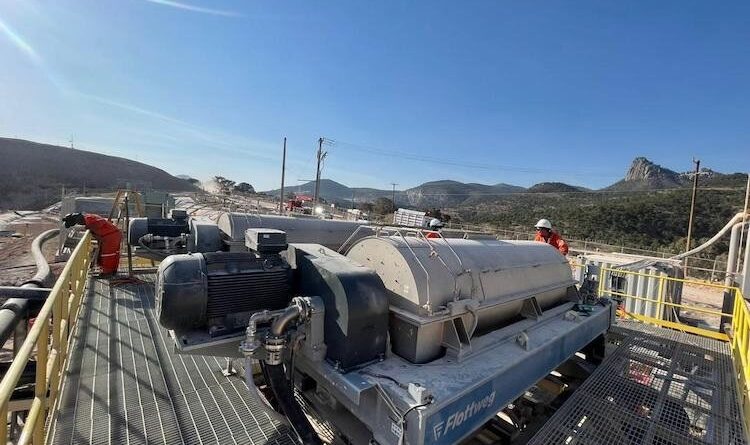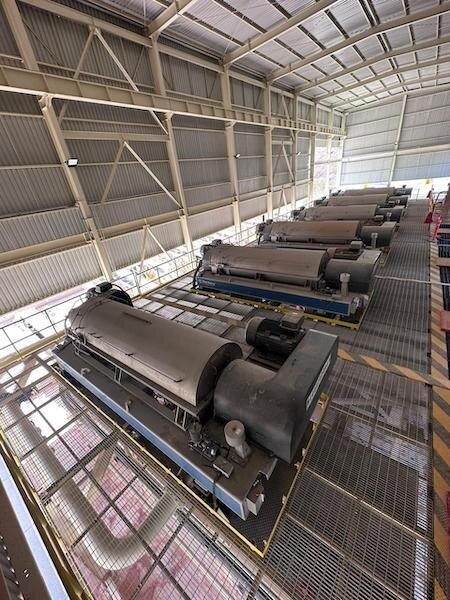Improving operations at Mexico mining company.
Ore bodies all over the world are mined for their much-needed minerals. Growing populations, new technologies, and the drive to improve our climate are all pushing mines to supply more minerals to power today’s world. Mineral processes use water as a media to help mix, leach, transport, or transform the minerals from the ore.
Globally water is one of our most precious resources, and the mining industry takes the responsibility of reusing and returning the water to its natural state seriously.
A large mining company in Mexico needed to improve process water recovery to supply recycled water to its flotation circuit for material separation and extraction.
Background
This large mining company is the global leader in mining the fluoro-products that play a fundamental role in enhancing everyday lives in a vast range of applications – including construction, batteries, polymers, refrigerants, medical devices, and active pharmaceutical ingredients, among others.
The company provides solutions for a variety of markets through a wide range of product applications – metspar, acidspar, hydrofluoric acid, anhydrite, aluminum trifluoride, refrigerants, medical propellants, energy storage, and technical propellants. The products are suitable for a range of applications including medical treatment, commercial refrigeration, automotive, construction, and utilities.
As the largest producer of fluorspar in the world, accounting for over 20 percent of global supply, as well as producing around ten percent of global hydrofluoric acid supply, these products are used by manufacturing centers in Mexico, United Kingdom, United States, and Japan. The mine-to-market structure ensures a secure supply chain for customers across a wide range of product applications and sectors.
 The challenge
The challenge
The Mexico-based mining operation was unable to obtain required production results using conventional thickeners and hydrocyclones.
The company mines a product in a location with very limited water needed for its operation. The smartest way to do that is to recycle water. However, in that process, it had used a large acreage of water settling ponds. Over the course of about 25 years, a large volume of very fine material accumulated in the water circuit that settled poorly naturally.
The mining company needed to find a solution, partially because they had a huge expense (spending $1 million per month) to purchase water. That water augmented the process and allowed production to continue, but it eventually began to run out of storage for the volumes of off-spec, fine ladened water.
The value product was processed in a various ways. The solids settling rates were unacceptable. Generally, a percentage of the material, the larger, denser fractions, settled at acceptable rates, but the fine fractions’ settling rates allowed those to exit system still in suspension. This condition over time created massive volumes of water that could not be reused or discharged. They needed a solution that could facilitate extracting the rapid settling particles and capture the fines in single pass at a high throughput rate, something unique and technically oriented with sophisticated adjustability. It needed robust construction with advanced wear proception solutions to withstand the harsh realities of mining.
The solution
The mining company partnered with Flottweg to find the solution. Both the mine and the Flottweg team took detailed samples throughout the process, which were sent to Flottweg’s laboratories in Germany for detailed analysis. Process engineers reviewed the mine’s unique needs and plant and process parameters and calculated a series of expected outcomes under various conditions.
Mutual effort between the mine’s engineering team and Flottweg resulted in a full-sized Z92 decanter centrifuge being installed in the mine’s operation in Mexico. Overseen by Flottweg’s highly trained technicians, both onsite and connected symmetrically in Germany, the mining company was able to achieve the highest level of efficiency and productivity.
Flottweg supplied a small footprint centrifuge to continuously and efficiently recover valuable process water and reduce the entrained solids burden. It has since added multiple machines to expand the water recovery processing capabilities.
After a highly successful pilot period, the Flottweg test equipment (model Z92) was converted to permanent installation in 2019.
While making the conversion, plans were developed to accommodate a full scale build out of six (6) decanters, facilitating the processing of the operation’s total tailing stream. Two additional machines were installed and placed in service a year later, and then an additional three machines were put into operation the next year – totaling six decanters currently operating and producing effectively.
There were three goals:
- Recover as much water as possible for operational reuse
- Reduce the overall volume of fine material with the reuse water
- Remove the solids that were generated from the mining operation
This involves the underground mining of rock that rises to the surface and is then ground into a very fine material. That material is then placed in a tank with a special tannin material that allows the value product to float. There is a residue of other ground material that is leftover, which is referred to as tailings.
How the technology works
The rotational forces developed within the decanter accelerate gravitational forces imparted onto the fluids passing through the device. The applied force can accelerate settling rates by hundreds or thousands of times compared to static conditions.
The modular design of this decanter centrifuge allows adjustability to optimize all kinds of separating tasks.
The Flottweg Decanters employed for this mine water recovery application allow for a multitude of adjustments that help to finetune results as needed. They include bowl speed adjustments across a broad spectrum that establishes the separation forces applied, solids conveyance scroll speed variations to maximize solids transportation, and mechanically adjusted water outflow weirs to define the internal fluid levels within the machine.
These three features help to tailor the results derived from the operation. The bowl and scroll speeds can be set up, through imbedded automation, to adjust as incoming feed changes allowing the machinery to continue delivering a standardized result.
Other specialty decanters can be sourced with an adjustable impeller. Normally, the clarified liquid runs out of a decanter without pressure, to the ensuing collection chamber. As an alternative, it is possible to transport the clarified liquid away using an impeller. Fluid exits in a closed system as a low-pressure stream. This variant provides the ability to make liquid level adjustments in real time, without resetting weir heights, providing one more optimizing feature to fine tune the separation performance. An enhanced version features an electronic impeller positioning device, to position the adjustable impeller.
Results
The Mexico mine covers more than 1000 acres and is the largest underground flourspar deposit in the world. Most of the material comes from underground in large mineral deposits.
Since installing the decanters, operating and water expenses have decreased dramatically. The use of the equipment has reduced cost by at least a third, with additional Flottweg solutions in the works to reduce that cost even further.
The mining company says that the machines are performing exactly as promised with increasingly positive results. Its goals are continued improvements to returning water quality and process to recover off-spec water from contaminated storage reservoirs.
The company decided to invest a significant amount of time and resources to improve their water management. “Flottweg offered us technologies that initially seemed really good, though we were skeptical they demonstrated results and I think the most important selling point is how they helped us reach optimization at both the centrifuge’s operation and the processes around it,” said a company representative.
“The advantage of taking Flottweg’s offer to lease their equipment to us so we could use it and provide a technical service to show not only how easy it is to use the equipment, but also the rippling effect it would have in our system, was the key to success. So, the success of this work consisted in the technical part, but also the service part, especially. A key component was the Flottweg proposal to test-drive the equipment on site. I think that was the most important thing. And finding an important synergy that helped us get results that far exceeded our expectations.”
By Terry Ostrom
Terry Ostrom is the Mining and Minerals Industry Manager at Flottweg Separation Technology, Inc. He has a broad background in processing equipment including pumps, reagent systems and centrifuges. This along with his mining process engineering experience makes him well suited to support this industry.

 The challenge
The challenge